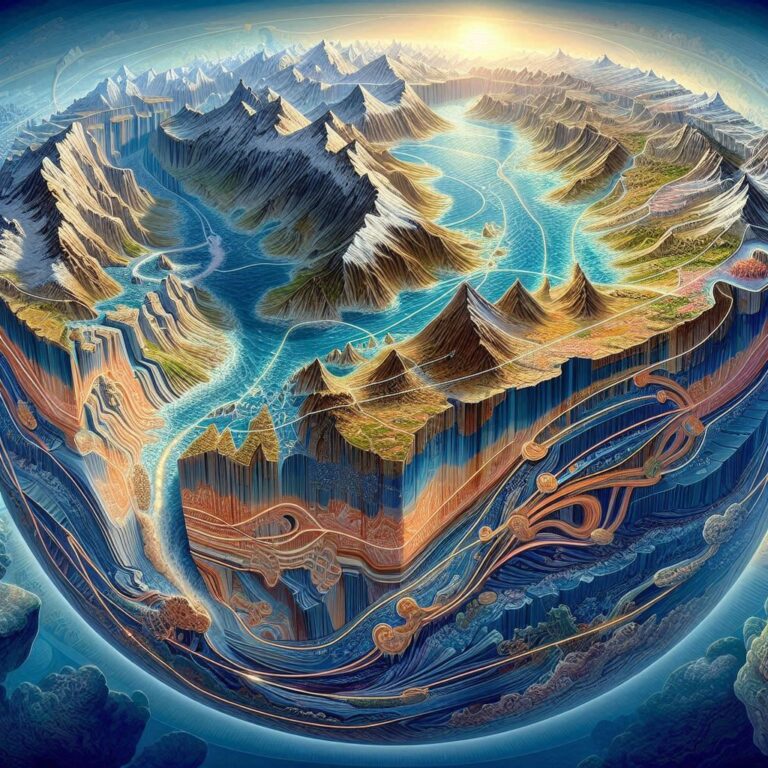Pangea is one of the most fascinating subjects when discussing Earth’s ancient geography. This colossal landmass is often the cornerstone of the theory of plate tectonics, captivating geologists, historians, and curious minds alike. But when exactly did Pangea exist? Did humans or dinosaurs live on it? And why did this supercontinent eventually break apart? Let’s dive deep into the timeline of Pangea and address these intriguing questions.
What Was Pangea?
Pangea (sometimes spelled Pangaea) was a supercontinent that existed millions of years ago. It included nearly all of Earth’s landmasses, forming a singular, gigantic continent surrounded by a massive ocean called Panthalassa. The name “Pangea” comes from ancient Greek, meaning “all Earth” or “all land.”
When Did Pangea Start and End?
Pangea formed about 335 million years ago during the late Paleozoic era. At that time, Earth’s continents, which were once scattered, came together to form this massive landmass. Pangea lasted for millions of years before it began to break apart.
The breakup of Pangea started around 175 million years ago in the early Jurassic period, and it continued over tens of millions of years. By the end of the Cretaceous period, around 66 million years ago, Pangea had completely fragmented into the continents we recognize today.
Did Humans Exist During Pangea?
Humans did not exist during the time of Pangea. Our species, Homo sapiens, only appeared roughly 300,000 years ago, which is long after Pangea had already split apart. However, a different set of life forms, particularly dinosaurs, thrived during the era when Pangea was still intact.
Did the Dinosaurs Live on Pangea?
Yes, dinosaurs roamed the Earth during the time of Pangea. Dinosaurs first appeared around 230 million years ago during the Triassic period, a time when Pangea was still largely unified. As Pangea began to break apart, dinosaurs spread across the different landmasses, adapting to various environments created by shifting tectonic plates. By the time the supercontinent fully disintegrated, dinosaurs were found on nearly all the major continents.
Why Did Pangea Break Up?
The breakup of Pangea was primarily driven by plate tectonics, the process by which Earth’s lithosphere (its outer shell) is divided into several plates that move over the planet’s molten mantle. The movement of these plates over time caused Pangea to slowly drift apart.
As heat from Earth’s core rises, it causes convection currents within the mantle, leading to the movement of tectonic plates. Over millions of years, these movements generated stresses in Pangea’s crust, eventually splitting it into smaller continents. As the landmasses drifted away from each other, new oceans formed, including the Atlantic Ocean, which continues to widen today.
How Long Ago Was Pangea?
Pangea existed approximately 335 to 175 million years ago, but the breakup process took tens of millions of years. It’s important to note that before Pangea, there were other supercontinents, such as Rodinia and Gondwana. And although Pangea was the most recent supercontinent, Earth might eventually form another one in the distant future.
Pangea and Panthalassa: Land and Sea
While Pangea was the supercontinent, it was surrounded by a vast, global ocean called Panthalassa. This enormous body of water covered much of Earth’s surface and played a significant role in shaping the climate and environment during Pangea’s existence. As Pangea began to break apart, Panthalassa also transformed, giving rise to new seas and oceans.
Pangea and Gondwana: Two Supercontinent Giants
Another important part of Earth’s supercontinent history involves Gondwana, a southern supercontinent that existed long before Pangea. Gondwana was one of the key landmasses that later merged to form Pangea. It comprised what are today South America, Africa, Antarctica, Australia, and the Indian subcontinent.
As Pangea began to break up, Gondwana also fragmented into the continents we see today. So, while Gondwana and Pangea are often discussed together, they represent different stages in Earth’s tectonic history.
Is Pangea Real?
Yes, Pangea is a scientifically recognized supercontinent that existed during the Paleozoic and Mesozoic eras. Its existence is supported by extensive geological, fossil, and paleomagnetic evidence. Fossils of identical species found on continents that are now thousands of miles apart, along with similar rock formations across these regions, offer compelling proof of Pangea’s reality.
Moreover, the theory of plate tectonics provides a clear explanation of how and why Pangea existed, how it broke apart, and how Earth’s continents continue to drift today.
Pangea Map: A Glimpse Into the Past
A Pangea map offers a visual representation of how Earth’s continents once fit together like a jigsaw puzzle. In these maps, Africa, South America, North America, Europe, Asia, and even Antarctica are all interconnected. It’s fascinating to see how modern-day coastlines, which seem so far apart now, once nestled up against each other in Pangea’s embrace.
The Legacy of Pangea: What We’ve Learned
The study of Pangea and its breakup has given scientists valuable insights into Earth’s dynamic nature. It has helped us understand how continents move, how climates evolve, and how species migrate and adapt over time. The Pangea theory not only answers questions about Earth’s ancient past but also raises new ones about the future of our planet’s geology.
Could another supercontinent form millions of years from now? Some scientists believe that it’s possible. If plate tectonics continue on their current course, the continents might one day reunite, giving rise to a new supercontinent—Pangea Proxima.
Conclusion
Pangea’s existence, its eventual breakup, and the resulting formation of today’s continents are key chapters in Earth’s geological history. Although humans never witnessed Pangea, studying it allows us to better understand the forces shaping our planet. From the dinosaurs that roamed its vast landscapes to the gradual tectonic shifts that caused its demise, Pangea remains a powerful reminder of Earth’s ever-changing nature.
